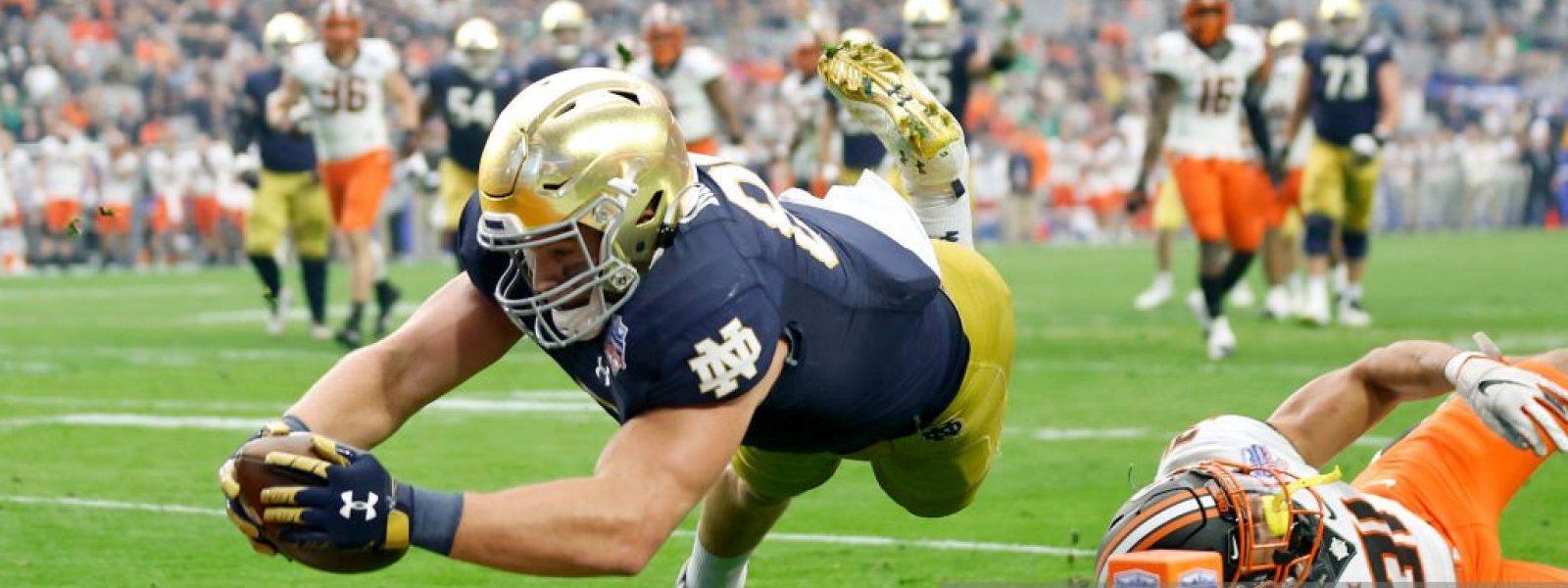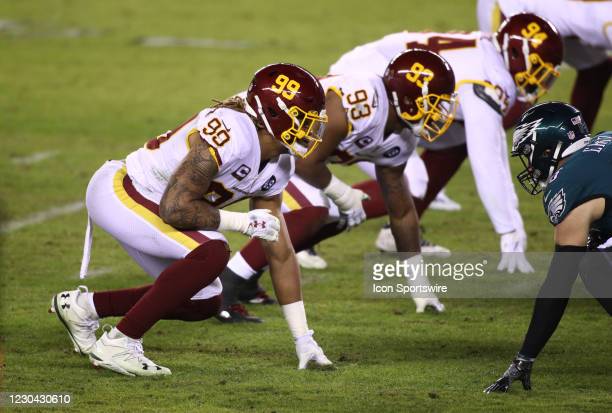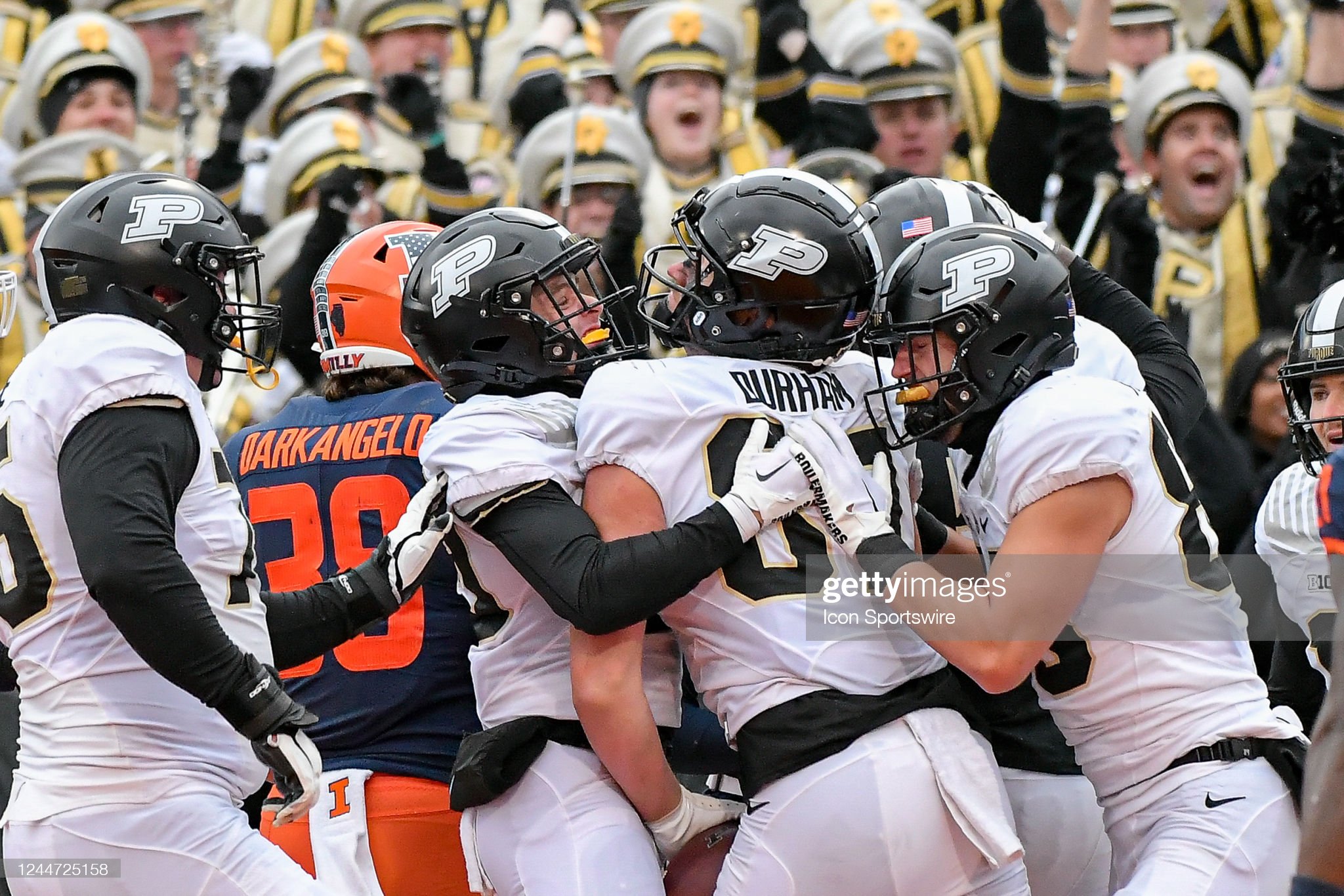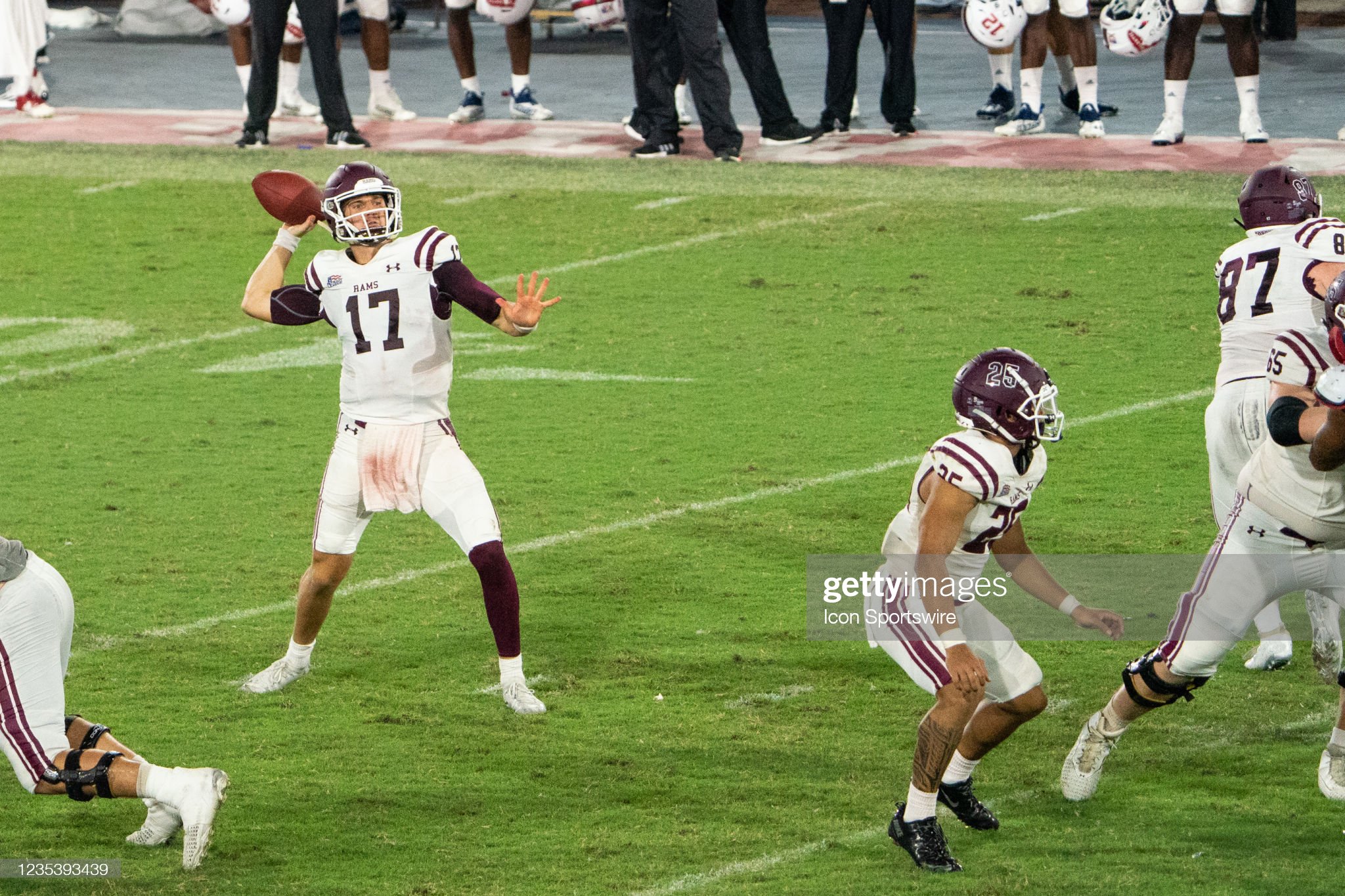A major part of scouting and preparing for the NFL Draft is studying what the National Football League is doing with its schematics as a whole. It’s easy for an analyst to get caught up in what a prospect did at their school in a certain scheme and not think ahead. The real part of scouting is the projection aspect – what is this prospect going to be able to do at the next level?
So many times on both sides of the football, we’ve seen players flame out because their skillset isn’t acclimated to what most NFL teams are currently doing. How many times have you read or heard an analyst talking about a linebacker and saying “this guy would be a first-round pick in 2005,” and wonder why he can’t be now?
The skill sets needed at every position is constantly evolving
When football first became a sport, it was a physical, downhill, run-the-football sport. If you wanted to win football games, you had to be able to be more physical than your opponent and run it down their throats.
Over the last twenty years, but more so over the last ten years, football has become an increasingly pass-heavy sport, where the run is relied on more as a misdirection or something to keep defenses honest and from playing heavily against the pass. What that has done is create a drastic shift in how both sides of the football run their schemes and what personnel on the field.
Traditionally, defenses have been referred to as 3-4 and 4-3 fronts – teams opting to play either three or four-down linemen depending on their base scheme. While many of those schematic principles still apply to modern defenses, they are becoming more inaccurate to describe base defensive fronts.
Every offense runs a lot of 11 personnel to spread the defense out
The main offensive personnel grouping that is run in the NFL currently is a grouping referred to commonly as “11 personnel.” The number in “personnel” describes the number of running backs and tight ends on the field. In the case of 11 personnel, it means one running back and one tight end. Other personnel groupings include 12, 21, 22, 23, and even 13 personnel.
The change to this really began in 2007 when New England Patriots head coach Bill Belichick acquired a small receiver from Miami, Wes Welker. Belicheck recognized that Welker, who was about 5’8″ and 185 pounds, would not be big enough to line up on the perimeter to play wide receiver, nor did he have the speed to outrun a boundary cornerback and create separation. What he did notice was that Welker was very quick and would be a mismatch on any linebacker underneath. The term coined to describe his position became “the slot.”

Over the next six years, Welker would catch over 100 receptions in five seasons, proving to be an absolute mismatch against linebackers and safeties that would attempt to cover him. As the rest of the league started to mimic the Patriots by finding their own quick players to place into the slot, defenses started realizing that a shift would have the be made to adjust to this new normal in offenses.
Moving base defenses to the nickel
The adjustment that defenses turned to was to take either a linebacker or defensive lineman off of the field and play an additional cornerback or safety on the field, a common personnel grouping known as the “nickel.” Traditionally, this defense was used mostly on passing downs where there were several yards to reach the first down.
Now, in the modern NFL where offenses run mostly 11 personnel and throw much more, teams have to plan to be in the nickel around 70% of the game. All of their offseason building and planning is predicated on the nickel being their base defense.
How NFL defenses use the base 4-2 Defensive front
The purpose of a four-man front is to free gaps for linebackers to clean up run plays. It was designed by the New York Giants, back in the day, to stop the Cleveland Browns run attack and it was so effective that by 1970, most NFL teams were running it. That same philosophy still applies today, only most defenses now operate with two, not three linebackers.
Let’s start with the defensive line. Defensive tackles now are currently designed to compress the pocket and contain double teams on the inside. In the diagram below, #90 is lined up in the B-gap, in hopes that his positioning there will force the center to move over to help. This is also referred to as a 3-tech. The other defensive tackle lines up on the left guard, which is referred to as a 2-tech. He hopes to attract the attention of the left tackle, and get his edge rusher (#94) in a one-on-one situation with the tight end.
The defensive line is designed to get one-on-one opportunities for the defensive ends on the outside. The more disruptive the defensive tackles are, the more attention that they attract and the more everyone on the defensive line disrupts the play.

What is the main difference from what is expected as a linebacker?
Here’s where the linebacker has changed. Because of the need for an extra defensive back, linebackers typically split the field in half, known as a “half-field concept.” One linebacker is responsible for the left side, and the other one is responsible for the right.
Now this principle only applies to the run – once the play has been diagnosed as a pass, they will move into their next assignment, however the defense has planned that and schemed accordingly.
This requires two inside linebacker types – rangy and smart players. Downhill, smash-mouth linebackers, the ones that would have been first-round picks in 2005, don’t fit this modern scheme well at all and typically become a liability in pass coverage.
Going forward with the modern NFL
A term that you will see me using a lot when describing a linebacker is “half-field” assignment. This is the scheme that I am referring to. It’s a compliment when a player is described as being able to do this because nearly every NFL team is now doing it.
This breakdown of the 4-2 front also applies to most 3-man fronts in the nickel. Most NFL teams right now, when they switch to a nickel, stand up one of their defensive ends (typically one of their outside linebackers) and use them in the same way.
So there you have it. That’s the background on the basic philosophy of a 4-2 front and how the NFL has gotten here.






